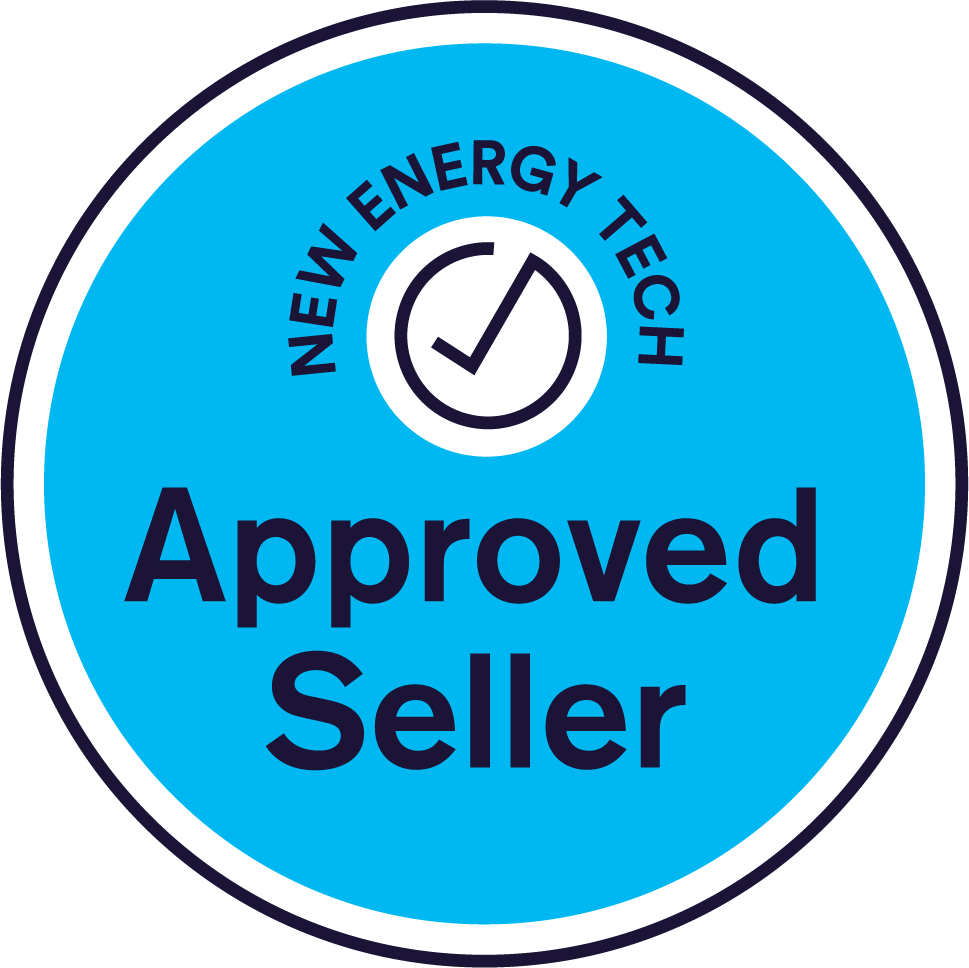Unlock energy independence and massive savings with a solar battery for home in Australia. This expert guide covers everything from benefits and costs to top brands, rebates, and essential tips for choosing the perfect home battery storage solution.
Introduction: Why a Solar Battery for Home is a Game-Changer in Australia
Australia, the sunburnt country, boasts some of the highest solar panel adoption rates globally. However, for years, homeowners have faced the challenge of what happens when the sun goes down or during a blackout. Enter the solar battery for home – a revolutionary technology transforming how Australians consume and manage their solar-generated electricity. As expert solar installers, we've witnessed firsthand the growing demand for these systems, and for good reason. A home battery allows you to store excess solar energy produced during the day and use it at night, drastically reducing your reliance on the grid, cutting electricity bills, and providing reliable backup power.
In this comprehensive guide, we'll delve deep into the world of solar batteries for homes, providing you with well-researched insights, actionable tips, and answers to your most pressing questions. Whether you're a seasoned solar owner or just starting your renewable energy journey, this article is your definitive resource.
1. The Core Concept: How a Solar Battery for Home Works
At its heart, a solar battery for home acts as an energy reservoir. When your solar panels generate more electricity than your home is consuming, instead of sending the excess back to the grid for a minimal feed-in tariff, the battery stores it. Later, when your solar panels aren't producing (e.g., at night, on cloudy days, or during a blackout), your home draws power from the stored energy in the battery. This maximises your self-consumption of solar power and significantly reduces your need to purchase electricity from the grid.
2. Benefits of Installing a Solar Battery for Home
The advantages of adding a solar battery for home are compelling:
- Significant Bill Savings: By using your stored solar energy during peak tariff hours, you minimise your imported electricity, leading to substantial savings on your power bills.
- Energy Independence: Reduce your reliance on the grid and fluctuating electricity prices. You're more in control of your energy supply.
- Blackout Protection: Many modern solar battery systems offer a "backup" function, keeping essential appliances running during grid outages.
- Reduced Carbon Footprint: Maximising your solar self-consumption means less reliance on fossil-fuel-generated electricity, contributing to a greener future.
- Optimised Time-of-Use Tariffs: Charge your battery when electricity is cheap (e.g., off-peak grid power or abundant solar) and discharge it when rates are high.
- Participation in Virtual Power Plants (VPPs): In some regions, you can join a VPP, allowing your battery to contribute to grid stability and potentially earn you credits or payments.
3. Types of Solar Batteries for Home: Understanding Your Options
The market for solar battery for home solutions is evolving rapidly. The primary types you'll encounter are:
- Lithium-ion Batteries: The most popular choice due to their high energy density, long lifespan, and efficiency. Within lithium-ion, LiFePO4 (Lithium Iron Phosphate) is gaining favour for its enhanced safety and stability.
- Lead-Acid Batteries: A more traditional and often cheaper option, but they have a shorter lifespan, require more maintenance, and are bulkier. Less common for modern residential solar setups.
- Other Emerging Technologies: While still niche, technologies like Lithium Titanate (LTO) and Zinc-Bromide are available, offering unique advantages in specific applications. Solid-state batteries are an exciting prospect for the future.
4. AC-Coupled vs. DC-Coupled Solar Battery Systems
When integrating a solar battery for home, you'll come across two main system architectures:
- AC-Coupled Systems: These batteries have their own inverter and connect to the AC (alternating current) side of your home's electrical system. They are ideal for retrofitting to an existing solar panel system, as they don't require changes to your existing solar inverter.
- DC-Coupled Systems: These batteries connect directly to the DC (direct current) output of your solar panels, usually through a hybrid inverter. They are generally more efficient as they avoid multiple DC-to-AC conversions, making them a great choice for new solar installations.
5. Sizing Your Solar Battery for Home: What Capacity Do You Need?
Choosing the right size solar battery for home is crucial for maximising its benefits. It depends primarily on your household's energy consumption patterns and your solar system's output.
- Average Daily Consumption: Review your electricity bills to understand your daily kWh usage.
- Peak Usage Times: Identify when you use the most electricity (e.g., evenings after work).
- Solar Production: How much excess solar energy does your system generate?
As a general guide:
- 1-2 people: 5-7 kWh battery
- 3-4 people: 8-13 kWh battery
- 5+ people: 13-18+ kWh battery
A common rough estimate is to multiply your solar panel system size (in kW) by 1.5 to get a starting point for your battery storage needs in kWh. Our expert team can conduct a detailed energy audit to recommend the perfect size for your specific needs.
6. Top Solar Battery for Home Brands in Australia (2025)
Australia's solar battery market features a range of high-quality brands. Some of the most reputable and popular choices for solar battery for home in 2025 include:
- Tesla Powerwall 2 & 3: Renowned for their integrated design, full-home backup capabilities, and user-friendly app.
- BYD Battery-Box (HVS/HVM Series): Highly modular and scalable, offering excellent compatibility with leading hybrid inverters like Fronius.
- AlphaESS Smile Series: Known for good value, strong VPP support, and hybrid-ready options.
- Sungrow: Offers a range of reliable and affordable hybrid inverters and batteries, often paired with AlphaESS or FOX ESS.
- Enphase: Popular for its modular microinverter-based battery solutions, ideal for expanding storage capacity.
- Sigenergy SigenStor: An emerging player with integrated inverter and battery systems, offering fast switchover times for blackout protection.
We only work with Tier 1 brands that provide excellent warranties, local Australian support, and proven performance.
7. Cost of a Solar Battery for Home in Australia
The cost of a solar battery for home in Australia varies significantly based on capacity, brand, and installation complexity. As of 2025:
- Battery Unit Only: Prices can range from $4,000 for smaller units to $18,000+ for larger capacities.
- Installed Cost (Battery + Inverter/Charger):
- 5 kWh: Starting from $7,500
- 10 kWh: Starting from $15,000
- 13.5 kWh (e.g., Tesla Powerwall): Starting from $20,250
While the upfront investment can be substantial, the long-term savings and benefits often make it a worthwhile investment, with payback periods typically ranging from 6 to 10 years.
8. Government Rebates and Incentives for Solar Battery for Home
Australia offers various government incentives to make solar battery for home more accessible:
- Federal Cheaper Home Batteries Program (from July 1, 2025): A significant new initiative offering around a 30% discount on the upfront cost of eligible small-scale batteries. This discount will be applied directly by retailers and installers.
- Small-scale Renewable Energy Scheme (SRES): While primarily for solar panels (through STCs), the Cheaper Home Batteries Program will be delivered through an expansion of SRES.
- State and Territory Specific Programs: Several states and territories offer their own rebates, interest-free loans, or other incentives. For example:
- NSW: Peak Demand Reduction Scheme (PDRS) offers upfront discounts and VPP credits.
- Victoria: Offers interest-free loans.
- ACT: Provides interest-free loans.
- WA: Pledged rebates and interest-free loan elements.
It's essential to check your specific state's eligibility criteria and scheme details. We stay up-to-date with all available incentives and can help you navigate the application process.
9. Return on Investment (ROI) of a Solar Battery for Home
Calculating the ROI for a solar battery for home involves considering electricity bill savings, potential VPP earnings, and the initial investment. While solar panels typically have a faster payback, batteries contribute to greater overall savings and energy independence.
For a typical 6.6kW solar system with a 13.5kWh battery:
- Estimated Annual Savings: ~$1,300–$1,800, depending on your electricity tariff and usage.
- Payback Period: Often 6-10 years, potentially faster with high evening usage, EV charging, or VPP participation.
10. Installation Process for a Solar Battery for Home
Installing a solar battery for home should always be done by accredited and experienced professionals. The process generally involves:
- Site Assessment: Evaluating your existing solar system, electrical panel, and suitable locations for the battery.
- System Design: Customising a battery solution that meets your energy needs and budget.
- Permits and Approvals: Obtaining necessary electrical and grid connection approvals.
- Installation: Mounting the battery, wiring it into your solar and home electrical system, and installing the necessary inverters and safety equipment.
- Commissioning and Testing: Ensuring the system operates correctly and safely.
- Monitoring Setup: Configuring the monitoring app to track your energy usage and battery performance.
11. Maintenance and Longevity of Your Solar Battery for Home
Modern solar battery for home systems are designed for minimal maintenance. However, some practices can extend their lifespan:
- Temperature Control: Install the battery in a temperature-controlled environment (ideally between 10°C and 30°C) as extreme temperatures can degrade performance.
- Regular Visual Inspections: Check for any signs of damage or unusual behaviour.
- Monitoring System: Regularly check your battery's State of Charge (SOC) via the monitoring app to ensure it's operating optimally.
- Avoid Deep Discharges: While many modern lithium batteries can handle deep discharges, avoiding frequent full depletion can prolong their life.
- Professional Servicing: Schedule periodic professional inspections to ensure all connections are secure and the system is functioning efficiently.
Most solar batteries have a lifespan of 10 to 15 years, with some reaching 20 years or more, typically warranted for a certain number of cycles or years.
12. Safety Considerations for Solar Battery for Home
Safety is paramount. Modern solar battery for home systems are rigorously tested and adhere to strict Australian standards (like AS/NZS 5139). Key safety features include:
- LiFePO4 Chemistry: Safer and more stable than older lithium-ion chemistries.
- Battery Management Systems (BMS): Advanced electronics that monitor and control battery health, preventing overcharging, overheating, and short circuits.
- Proper Ventilation: Ensuring adequate airflow around the battery.
- Professional Installation: Accredited installers follow strict safety protocols and wiring standards.
13. Integrating a Solar Battery with Smart Home Technology
A solar battery for home can be seamlessly integrated with smart home technologies. Many battery systems come with intuitive apps that allow you to:
- Monitor real-time energy flow (solar production, home consumption, battery charge).
- Control battery charging and discharging schedules.
- Optimise usage based on time-of-use tariffs.
- Receive alerts and performance reports.
- Participate in VPPs.
14. Virtual Power Plants (VPPs) and Your Solar Battery for Home
VPPs are an exciting development for solar battery for home owners. By joining a VPP, you allow your battery to be intelligently managed by a central operator, contributing excess stored energy back to the grid during periods of high demand. In return, you receive financial incentives, often in the form of bill credits or payments. This not only benefits you but also helps stabilise the grid and supports Australia's transition to a cleaner energy future.
15. The Environmental Impact of a Solar Battery for Home
Beyond personal savings, a solar battery for home significantly reduces your environmental footprint. By storing and using more of your self-generated solar power, you:
- Decrease reliance on fossil fuels: Especially during peak evening hours when the grid often relies on gas or coal-fired power plants.
- Lower greenhouse gas emissions: Directly contributing to climate change mitigation.
- Reduce energy waste: Maximising the utilisation of your clean solar energy.
While battery manufacturing has an environmental footprint, the long-term benefits of renewable energy integration far outweigh these initial impacts.
16. Future Trends in Solar Battery for Home Technology
The landscape of solar battery for home technology is rapidly evolving. Expect to see:
- Increased Energy Density: Smaller, more powerful batteries.
- Lower Costs: Continued cost reductions due to economies of scale and technological advancements.
- Improved Lifespan: Batteries lasting even longer with enhanced cycle life.
- Smarter Integration: More sophisticated AI and machine learning for predictive energy management.
- New Chemistries: Exploration of alternative battery chemistries for enhanced safety and performance.
17. Common Myths About Solar Battery for Home
Let's bust some common myths about solar battery for home:
- Myth: They're too expensive. While an investment, prices are falling, and generous rebates are making them more accessible. The long-term savings are significant.
- Myth: They don't last long. Modern batteries are warranted for 10-15 years, and often last longer.
- Myth: They're dangerous. When installed by certified professionals and using reputable brands, solar batteries are extremely safe.
- Myth: You'll go completely off-grid. While possible, most homes choose to remain grid-connected for backup and to sell excess power. Batteries offer energy independence, not necessarily total grid disconnection.
18. Choosing the Right Solar Battery Installer
Selecting an experienced and reputable installer is crucial for your solar battery for home system. Look for:
- Accreditation and Licensing: Ensure they are Clean Energy Council (CEC) accredited.
- Experience: A proven track record with battery installations.
- Reputation: Check reviews and testimonials.
- Warranty and Support: Clear warranties on both products and workmanship, and readily available local support.
- Comprehensive Service: From initial consultation and design to installation and after-sales support.
19. Frequently Asked Questions (FAQs) about Solar Battery for Home
Q1: Can I add a solar battery to my existing solar panel system? A: Yes, absolutely! Many solar battery for home solutions are designed to be retrofitted to existing solar systems, particularly AC-coupled batteries.
Q2: How much does a solar battery for home cost in Australia? A: Installed costs typically range from $7,500 for smaller batteries to over $20,000 for larger systems, before rebates.
Q3: How long do solar batteries for home last? A: Most modern solar batteries have a lifespan of 10 to 15 years, backed by manufacturer warranties.
Q4: Will a solar battery for home power my entire house during a blackout? A: It depends on the battery's capacity and the loads you connect. Many systems offer a "backup gate" or "essential loads" circuit to power critical appliances during an outage. Full home backup requires a larger system.
Q5: Are solar battery for home rebates available in all Australian states? A: While the new Federal Cheaper Home Batteries Program will be national from July 2025, specific state and territory rebates vary. It's best to check your local government's energy website or consult with your installer.
Q6: Is a solar battery for home worth it? A: For many Australian homeowners, especially with rising electricity costs and decreasing feed-in tariffs, a solar battery for home is a sound investment, offering significant savings, energy independence, and blackout protection.
20. Conclusion: Embrace Energy Freedom with a Solar Battery for Home
The shift towards a sustainable energy future is undeniable, and the solar battery for home is at the forefront of this revolution in Australia. From cutting your electricity bills and safeguarding your home against blackouts to reducing your environmental impact and participating in the smart grid, the benefits are clear and compelling.
As expert solar installers, we are passionate about empowering Australian households to achieve true energy independence. Investing in a solar battery for your home isn't just about technology; it's about making a smart, sustainable choice for your family and the planet.
Call to Action:
Ready to unlock the full potential of your solar power and experience the benefits of a solar battery for home? Contact us today for a free, no-obligation consultation. Our team of experienced professionals will assess your needs, provide a customised solution, and help you navigate the rebates to find the perfect energy storage system for your Australian home. Don't just generate solar power, store it and use it – day and night!



